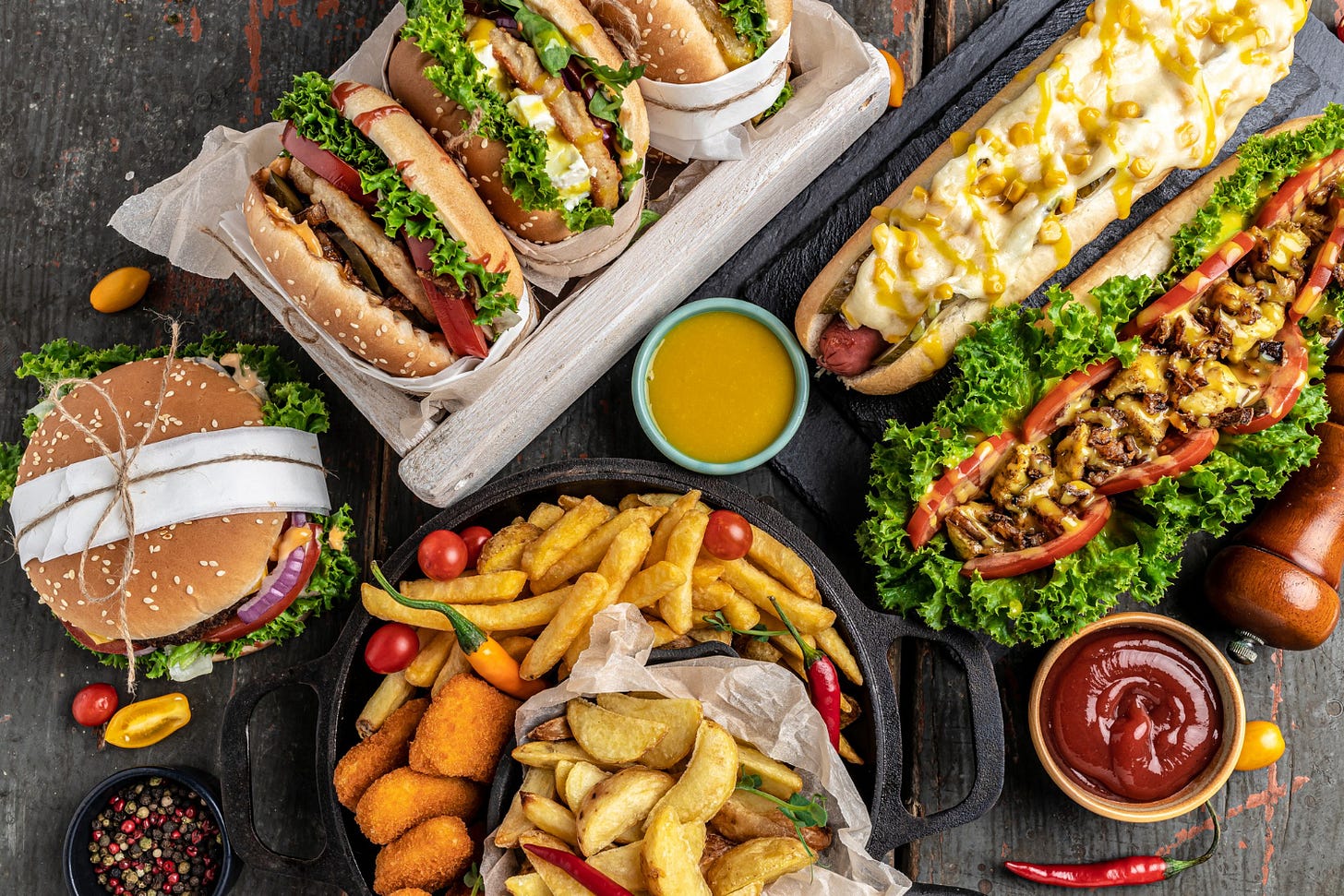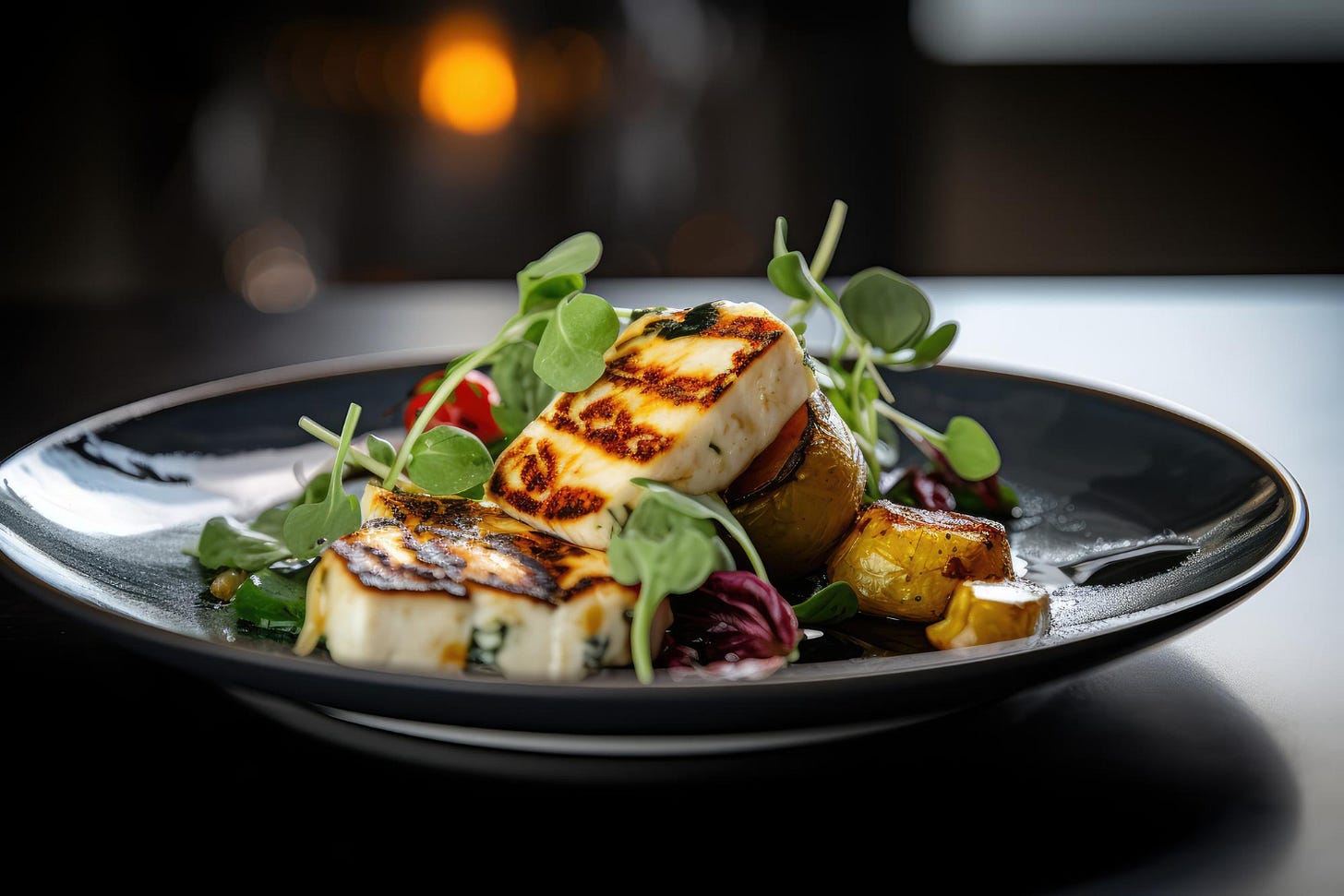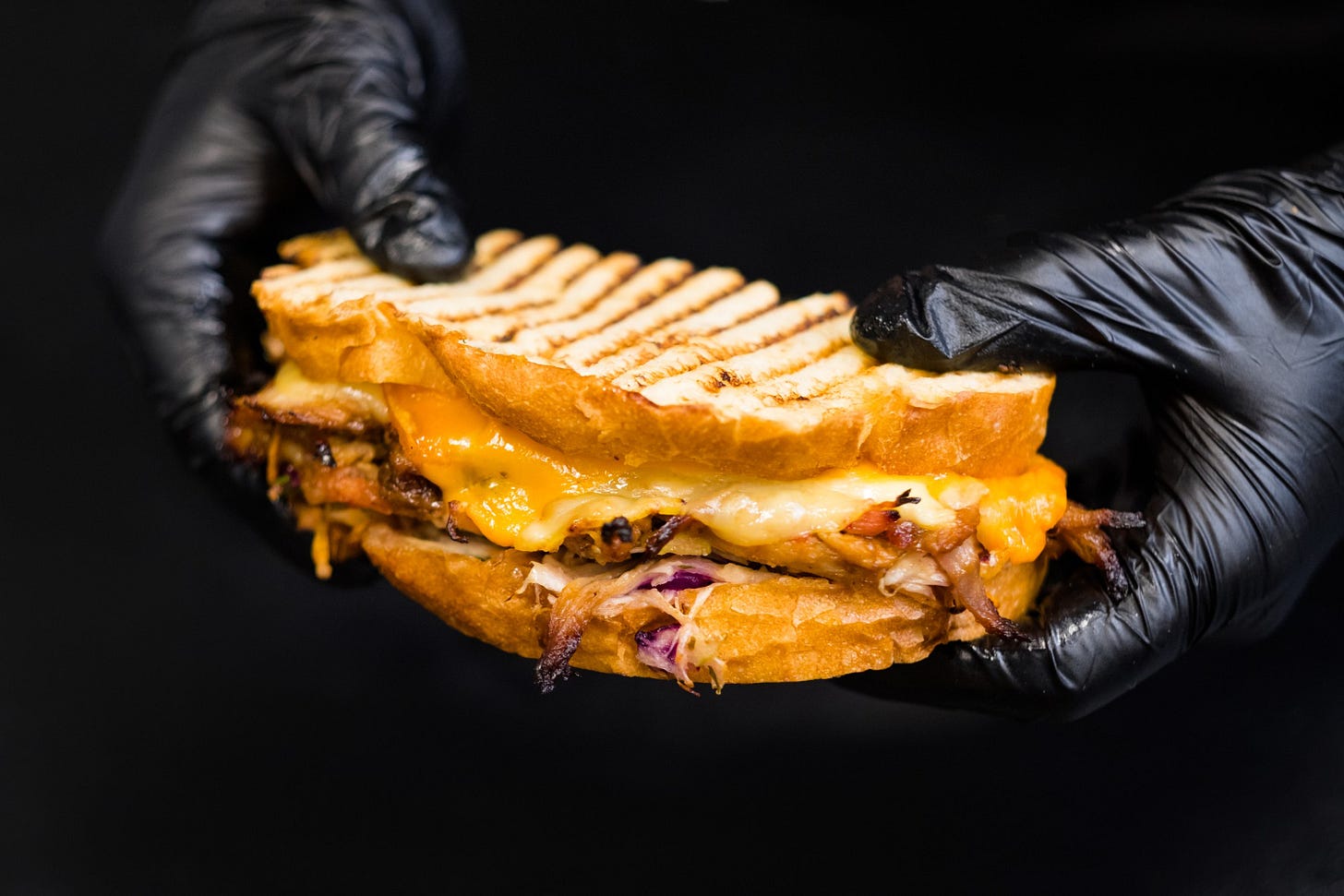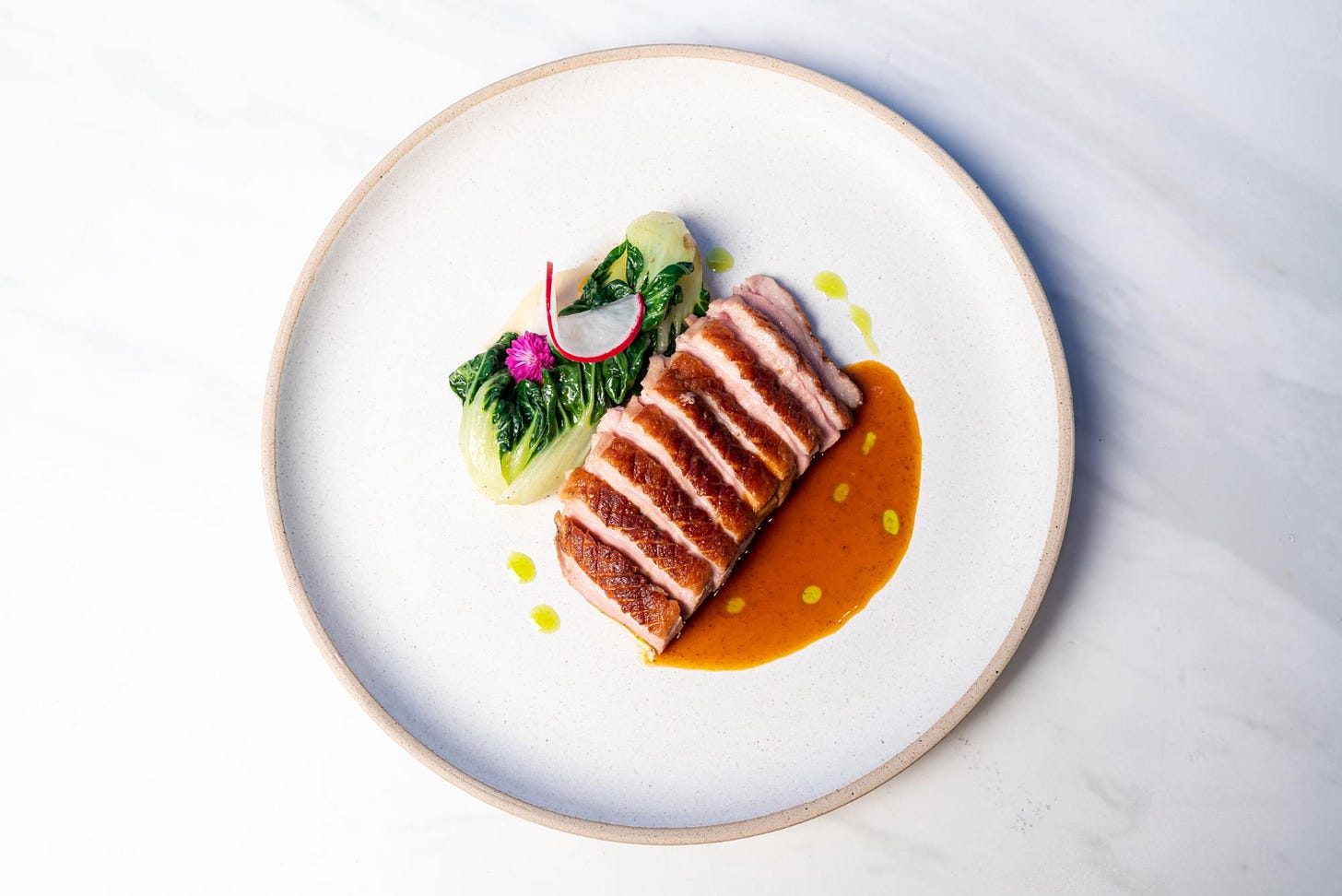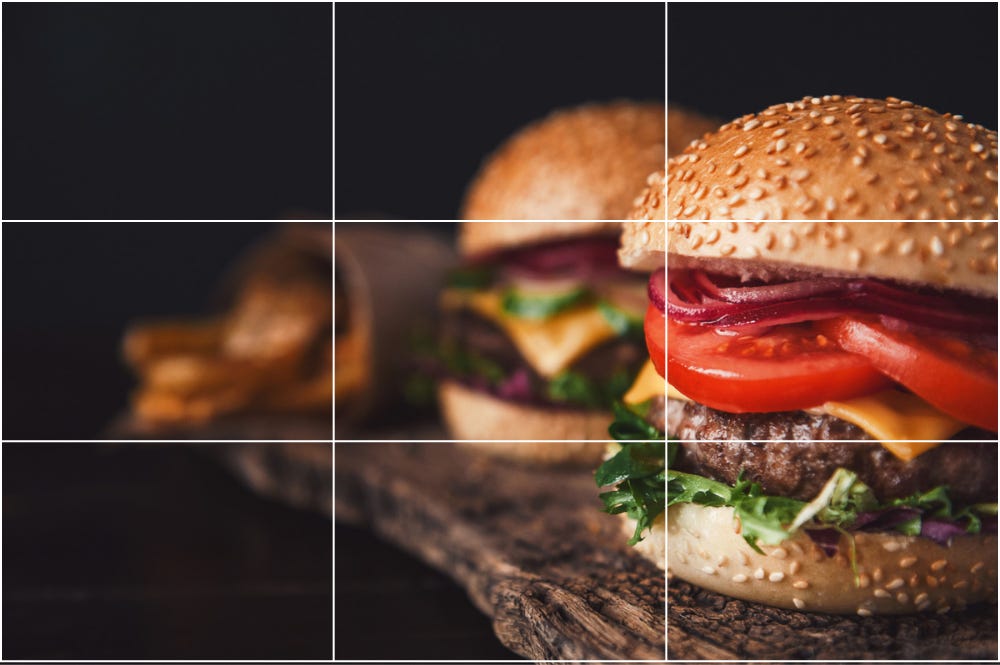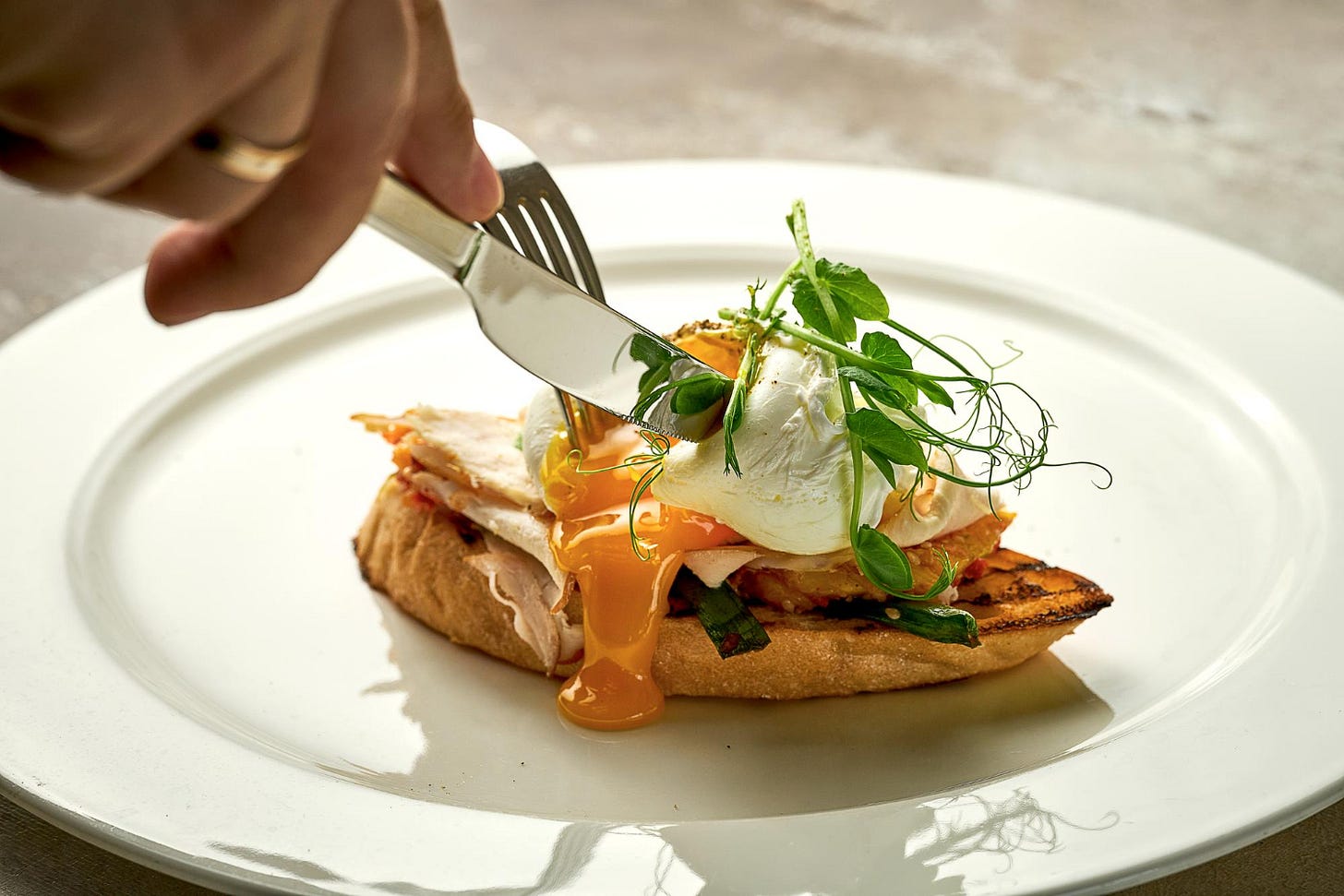🧰 The Psychology of Food Presentation
How to Influence Customer Choices
When it comes to dining, taste is undoubtedly the top priority. But did you know how food is presented can also significantly impact customer choices?
A beautiful-looking plate can influence the perceived value of a meal, allowing restaurants to justify higher prices and elevate the overall dining experience.
In this deep dive article, we'll explore the psychology behind food presentation and how it can influence customer behaviour.
With this guide, you will learn how to use food presentation to your advantage and create a more memorable dining experience.
Contents
Anticipation
First Impressions
Energy Density
Angular Foods
Mental Simulation
Impact of Plate Size, Shape, Colour
Food Arrangement Techniques
The Power of Colour
Digital Food Presentation
Digital Marketing Tips
References
Anticipation
Anticipation is a powerful tool hospitality professionals can use to influence customers' food choices. By using appealing images, descriptive adjectives, and sensory words, luxury hotels and restaurants can boost their sales.
Studies have shown that the expectation of fulfilment can significantly impact customers' craving response. Customers who see pictures of well-prepared, delicious-looking food on a restaurant's website or menu are likelier to feel hungry and order those items.
Anticipation can be enhanced by using descriptive adjectives and sensory words to create a vivid image of the food items in the customer's mind. By using sensory words like "juicy," "crispy," or "flavourful," restaurants can stimulate the customers' senses and make them more likely to anticipate the food.
Recent statistics show that 56% of customers are more likely to order a dish with a delicious description. Using sensory words in menu descriptions and social media posts can increase sales by 27%.
Hotels and restaurants can also leverage the power of anticipation by providing customers with a unique experience; this can be achieved by creating aspirational social media posts, providing guests with personalised communication, a warm welcome on arrival, the ambience that complements the food items, playing soft music, or lighting that enhances the customer's mood.
By doing so, customers are more likely to feel relaxed and enjoy their dining experience.
First Impressions
We all know how important it is to make a positive first impression. The presentation of a dish creates a first impression in the customer's mind, setting the tone for the entire dining experience.
A well-presented dish can create a sense of anticipation and excitement, while a poor presentation can lead to disappointment.
A study conducted by the Cornell Food and Brand Lab found that when a salad was arranged tidily, customers perceived it to be more appetising and enjoyable and were willing to pay more.
On the other hand, when the same ingredients were presented disorganised and messy, customers perceived the salad as of lower quality and were willing to pay less for it.
Energy Density
The human brain computes the energy density of food displayed visually, whether in front of the viewer or digitally represented. This means that when we see food, our brain automatically calculates how much energy food will provide us - this biological function is crucial for our survival as a species.
Humans strongly prefer foods high in sugar and fat, as these foods are highly valued from an energy perspective which triggers the brain's reward circuits.
Perceived caloric density positively influences likes, comments, and shares on social media platforms like Facebook and Instagram.
By displaying food items with high energy density, hotels and restaurants can create a visual appeal and trigger food cravings in consumers.
Low-calorie meals can attract attention by showing multiple portions or positioning the low-calorie options alongside food items with high energy density on their online menus.
Angular Foods
The angle at which triangular foods are presented can influence people's preferences. According to a study by Shen et al., downward-pointing food was rated significantly less pleasant and less liked than when the same food pointed upwards.
Evolutionary psychologists suggest that the primitive brain perceives something angular pointing towards us as a possible weapon that could be dangerous, even if it is as harmless as a slice of pizza or cake.
As a result, customers may subconsciously perceive downward-pointing angular foods as a threat, leading to a negative perception of the food.
Chefs and waiting staff can use this insight to improve customer perception by presenting angular foods upward.
Mental Simulation
Mental simulation in food marketing means imagining what it would be like to eat a particular food. This can help people decide if they want to eat it or not.
Handheld foods like burgers and drinks can be positioned on the right-hand side of the image to enhance the viewer's ability to visualise consuming the item, leading to a more immersive experience.
Similarly, placing tableware handles towards the viewer's dominant hand makes it easier for the brain to imagine consuming the food.
Plate Size
Several factors can influence the overall aesthetics of a dish, including the plate's size and shape. Larger plates can enhance the appearance of a dish, making it look more appetising and attractive. Smaller plates can create a more intimate and sophisticated atmosphere, making the dining experience more memorable.
Buffets should take the Delboeuf illusion into account when selecting a plate size.. This perceptual bias can affect how people perceive the size of objects, including the amount of food on a plate. If the plate is large, the food on it may appear smaller than it is, leading a person to serve themselves more. Conversely, if the plate is small, the food may appear larger, causing a person to serve themselves less.
Choosing the correct plate size is essential for maintaining the perfect balance.
Ideally, the plate should be large enough to accommodate the meal without overcrowding but small enough to make the portions appear substantial to appeal to our energy density bias.
Plate Shape
According to Spence's research, the shape of a plate can greatly affect diners' perceptions of food and how they taste it.
It was found that round, white plates can enhance the sweetness of a dish, while angular, black plates can highlight savoury flavours.
Choose a plate shape that complements the food served, such as a square plate for lasagne or a round plate for pancakes.
In addition to plate shape, the type of restaurant can also influence the plating style. Fine dining establishments may opt for classic china dinnerware, while trendy gastropubs may experiment with unconventional shapes and materials.
Plate Colour
The colour of a plate can significantly impact the presentation. White plates are often preferred as they provide a neutral background for colourful foods. Dark plates, on the other hand, can enhance the appearance of lighter-coloured dishes.
A study conducted by Oxford University has shown that the contrast between the background colour and the food can influence how visually appealing a dish appears.
Moreover, the colour of the plate can prime associated concepts, such as blue plates being associated with a colder temperature and red plates with a warmer temperature.
Food Arrangement Techniques
A food's visual appeal can be greatly influenced by its arrangement. The brain is wired to seek patterns and order.
When food is arranged in an orderly way, it activates the brain's reward system, triggering the release of dopamine, which can create a sense of satisfaction and pleasure.
Classical Aesthetics
Plating and presentation that adheres to classical aesthetic principles, such as balance, order, symmetry, and pattern repetition, increase people's preferences for food compared to standard or messy presentations.
A Cornell Food and Brand Lab study found that symmetrical and orderly food arrangements were rated as healthier than asymmetrical and disorderly food arrangements.
Contrary to popular belief, people do not necessarily exhibit a visual preference for odd over even numbers of elements on the plate.
Focal Point
The brain is wired to focus on one thing at a time, and a focal point guides our attention to that particular item.
By creating a visual hierarchy, a focal point helps to organise information and make it easier for the viewer to understand. In addition, people are more likely to remember something that stands out, which helps create a lasting impression.
A central component or bold colour that stands out from the rest of the dish can be a focal point.
Don't overcrowd the plate, and keep the design simple by focusing on one main ingredient and arranging accompanying items to complement the standout item.
Rule of Thirds
The rule of thirds is a simple yet effective technique that can significantly enhance a dish's presentation and perceived value.
It involves dividing the photo into nine squares, with two horizontal and two vertical lines equally spaced. The photo's subject should be placed along these imaginary lines or intersections to create a more interesting and balanced composition.
This technique helps to create a sense of depth and to avoid placing the subject directly in the centre of the frame.
Studies have shown that dishes presented using the rule of thirds sell better than those arranged in the centre of the plate and are perceived as more sophisticated.
Clock
A helpful tip for creating a balanced, visually appealing food presentation is to view the plate as a clock.
Place Vegetables between 12 and 3 o'clock.
Proteins between 3 and 9 o'clock.
Starches and carbs should go between 9 and 12 o'clock.
Finishing Touches
Green is often associated with freshness and health, which explains why adding green herbs as a garnish to food can enhance its visual appeal.
The study conducted by Roque et al. suggests that the concept of freshness is not just limited to food but also extends to beverages.
Their study found that consumers perceive beverages with natural ingredients and no additives as fresher and healthier than those with artificial ingredients.
Power of Colour
Colour is an essential element in food presentation, as it affects the diner's taste and flavour perception.
Studies have shown that incorporating bold and complementary colours in a dish's presentation can make it more visually appealing and enticing for the customer.
Bright reds and greens can make a dish appear fresh and vibrant, while dark colours like black and blue can be perceived as unappetising due to their rarity in natural foods.
Changing the colour of traditional food can change the taste perception. For instance, a study found that when orange juice was dyed to look like grapefruit juice, participants described it as having a grapefruit-like flavour.
Colourfulness plays a significant role in the context of salads, making them more visually appealing to consumers. However, this is not limited to salads, as colourful meals suggest they are likely to contain a greater proportion of vegetables, regardless of the meal type.
Black and white images of food are rated significantly less appealing than their colour counterparts.
Digital Food Presentation
Research in cognitive neuroscience has shown that whenever we see something that is potentially edible, our brain immediately estimates the food's likely energy density and then automatically directs its visual attention to the most energy-dense element in the scene, even when it is only portrayed visually in an image, such as in an advert or on a digital screen.
Using high-quality, high-resolution images with vibrant colours and textures can evoke positive emotions and cravings in the viewer, increasing the likelihood of ordering the dish.
With the advancement of technology, the future of food presentation is likely to see even more innovation and creativity. From the use of augmented reality to enhance the dining experience to the development of new and unique plating materials, the possibilities for food presentation are vast and exciting.
Advertising
As philosopher Immanuel Kant noted, food advertising differs from other product advertising forms. Food uniquely captures viewers' attention, even when depicted in an advertisement, picture, or painting.
Food is a basic human need and can evoke strong emotional responses. Food commercials elicit significantly larger brain neural responses than non-food advertisements.
These neural responses have been linked to the sales of indulgent foods at the point of purchase.
Mixed Reality Environments
Mixed Reality Environments offer exciting opportunities for the food industry to improve customer experience. 3D-visualisation of food increases perceived interactivity with food compared to AR.
Higher immersion and mental simulation of the eating process positively affect the product's evaluation. In addition, dynamic food images allow consumers to generate mental simulations of the product's transformation, rotation, and reorganisation, generating a positive carryover effect on the product's evaluation.
Food & Drink In Motion
Consumers find foods portrayed in motion significantly more visually attractive than stationary foods. Images that show drinks poured into a glass are more visually appealing than static images of the same beverage.
Food in motion increases the perceived freshness of the product. A study that added dynamic boiling images to a food display found that participants' appetite ratings increased before and after eating compared to when the image was presented without the animated overlay.
Social Media
Approximately 85% of the images on Instagram involve food, while over 60% on Pinterest are food-related.
Consumption habits and food choices can be influenced significantly by social media. What we see on social media can influence our eating habits, and we tend to favour visually appealing foods such as "oozing" protein, dribbling egg yolks, or bubbling mozzarella.
Images of healthier food options with high "likes" on visual platforms like Instagram may encourage individuals to choose healthier eating options.
Research by Young suggests that the human brain evolved with food in mind, and contemporary cognitive neuroscience has demonstrated that the desirability of food is associated with increases in cerebral blood flow when people are hungry.
Consequently, potential customers are more likely to purchase at times when they are hungry.
Generating Word of Mouth and Social Media Buzz
Word-of-mouth marketing and social media sharing are the most effective ways to generate buzz and attract potential customers.
According to a Kindred study, 62% of millennials take photos of their food before eating it, and 43% share those photos on social media. However, this trend is not limited to millennials, as 30% of all social media users between 18 and 34 post photos of their food online.
The psychology behind this trend is multifaceted. People share visually appealing dishes on social media platforms to showcase their taste and status and connect with others with similar interests. Sharing on social media provides individuals with social validation and allows them to display their experiences and lifestyle.
Restaurants can capitalise on this trend by creating inherently shareable and visually striking dishes, such as colourful cocktails or unique presentations. Providing a visually pleasing atmosphere and encouraging guests to take photos further increase the likelihood of social media sharing.
Digital Marketing Tips
Focus on the visual appeal of the dish
Use bold and complementary colours
Plate food in an orderly way to activate the brain's pleasure centres
Be consistent in your plating style
Post at times when your audience is starting to feel hungry to drive cravings
Experiment with different plate shapes and sizes to find the perfect canvas for your culinary creations.
Use high-quality, fresh ingredients to ensure your dishes look amazing.
Update your word bank to include descriptive adjectives and sensory words
Showcase the ambience of your venue through colour, lighting and music that fits the mood customers can expect to drive anticipation
Point angular foods away from the customer
Place cutlery and handheld foods and drinks to the right of the image to trigger mental simulation.
Conclusion
Food presentation is a powerful tool for influencing customer choices in the hospitality industry.
By understanding the psychological concepts behind plate size, shape, colour, food arrangement, and motion, restaurant and hotel professionals can create visually appealing and enticing dishes that compel customers to purchase and helps create more memorable moments.
Here’s to Your Success! 🥂
References
Brenner, J. (2016, May 26). Social Media Update 2016. Pew Research Center: Internet, Science & Tech.
Bruno, V., Martani, M., Corsini, C., & Oleari, C. (2013). The effect of plate colour on food acceptability. Appetite, 71, 226-229.
Cheskin, L. J. (1951). The psychology of food intake. New York: Harper.
Cheskin, L. (1981). Packaged-goods psychology: How to use it to increase your sales. McGraw-Hill.
Cian, L., Krishna, A., & Elder, R. S. (2014). The effects of imagery on consumer behavior: A review and extension. Journal of Consumer Psychology, 24(3), 356-380. doi:10.1016/j.jcps.2014.01.002
Cornell Food and Brand Lab, "Big Plate, Small Plate"
Elliott, M. A., & Maier, M. A. (2012). Color psychology: Effects of perceiving color on psychological functioning in humans. Annual Review of Psychology, 63, 385-408.
Fujimoto, T. (2018). Effects of dynamic visual augmentation on appetite ratings and subsequent intake. Food Quality and Preference, 68, 154-159.
Holmberg, C., Berg, C., & Hannerz, L. Food in the social media: A study of young people's food and meals on Instagram and Pinterest. Appetite, 103, 32-42. doi: 10.1016/j.appet.2016.03.005
Kindred. (2017). From Crust to Core: A Millennial Food & Beverage Trend Report.
Petit, O., Velasco, C., & Spence, C. (2022). The influence of 2D, 3D, and augmented reality visualizations on perceived interactivity with food. Food Quality and Preference, 90, 104295. doi:10.1016/j.foodqual.2021.104295
Piqueras-Fiszman, B., Velasco, C., Salgado-Montejo, A., Spence, C., & Alemán, J. (2012). Using combined sensory modalities and explicit cues as a strategy to change product experience and acceptability. Food Quality and Preference, 24(1), 139-146.
Rozin, P. (2010). Plate and meal size manipulation tradeoff between wanting and liking. Physiology & Behavior, 100(3), 367- 372. doi: 10.1016/j.physbeh.2010.04.025.
Shen, Y., Wan, X., Mu, Y., & Spence, C. (2015). The influence of the shape of a glass on the perception and consumption of a carbonated beverage. Journal of Sensory Studies, 30(1), 44-57. doi: 10.1111/joss.12131
Shibuya, T., Kaneko, D., & Koida, K. (2022). Orientation of food images affects preference for the handedness of the grasp. Food Quality and Preference, 93, 104324.
Social media impacts consumer eating decisions (2021). Available at: https://www.foodbeverageinsider.com/market-trends-analysis/social-media-impacts-consumer-eating-decisions
Spence, Charles, and Betina Piqueras-Fiszman. "The Perfect Meal: The Multisensory Science of Food and Dining." John Wiley & Sons, Inc., 2014.
Spence, C. (2015). Eating with our eyes: From visual hunger to digital satiation. Flavour, 4(1), 1-3. doi: 10.1186/ s13411-015-0035-3.
Spence, C. (2017a). Gastrophysics: The new science of eating. Penguin.
Suzuki, R., Narumi, T., Tanikawa, T., & Hirose, M. (2021). Effects of steaming and boiling effects on food images on cognitive and emotional evaluations. Journal of Sensory Studies, e12714. doi:10.1111/joss.12714
Steele, K. M., & Rash, J. A. (2016). The influence of plate color on perception of a cheesecake’s sweetness and flavor intensity. Journal of Culinary Science & Technology, 14(3), 191-204.
Van Ittersum, K. and Wansink, B. (2011) "Plate Size and Color Suggestibility: The Delboeuf Illusion’s Bias on Serving and Eating Behavior", Journal of Consumer Research, 39(2), pp. 215-228. doi: 10.1086/662615.
Wansink, B., & Van Ittersum, K. (2013). Bottoms up! The influence of elongation on pouring and consumption volume. Journal of Consumer Research, 39(5), 954-67.
Wansink, B., & van Ittersum, K. (2013). Plate size and color suggestibility: The Delboeuf illusion’s bias on serving and eating behavior. Journal of Consumer Research, 39(2), 215-228. doi: 10.1086/665048
Young, P. T. (1968). The hungry brain. American Scientist, 56(4), 408-421.
Zhu, Y., & Xie, C. (2017). The effect of food visual presentation on consumers’ choice: A study of Instagram. International Journal of Hospitality Management, 63, 70-80.



